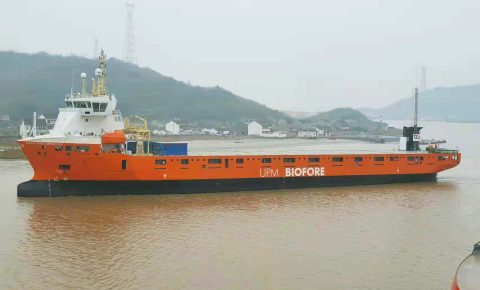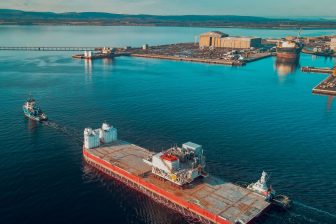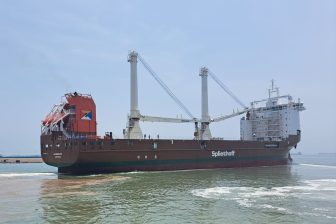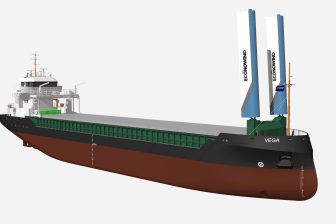
Wijnne Barends moves forward with fleet decarbonisation
Wijnne Barends, a member of the Spliethoff Group has made further inroads in decarbonising its operations with the delivery of its first LNG-fuelled LoLo vessel, Lady Marie Christine. The ice-class 1A vessel will serve a long-term charter with UPM transporting paper products in Europe, however, the story of this flexible type of vessel does not end there.
Shipping industry contributes to 2.7 percent of global CO2 emissions according to the energy giant Shell. While bulk carriers, oil tankers and container ships account for around 85 percent of all shipping activity, and are major contributors to these figures, general cargo and multipurpose sectors do have a minor share. In 2019, Spliethoff has made its first step to reduce CO2 emissions from its operations by placing an order for seven LNG-fuelled vessels.
To serve the UPM contract, Spliethoff shipping affiliate Bore will build three RoLo vessels for transporting UPM’s paper products and Wijnne Barends four LoLo vessels. Wuhu Shipyard in China launched the second of Bore’s Roll-on, Lift-off vessels, Bore Wave, at the end of last year. Together with previously launched Bore Way the vessel is scheduled for delivery in the early stages of 2022.
However, Wijnne Barends was the first company to have one of the seven newbuilds delivered. Lady Marie Christine is the first ship in a series of four LNG-fuelled Lift-on, Lift-off ships. Her maiden trip is to load cargo in China for Germany. Lady Marie Christine is the first dry bulk cargo vessel in short sea shipping in Europe that will be able to operate on LNG.
Reducing emission with LNG
According to DNV, LNG-fuelled vessels can reduce their EEDI rating by 20 percent, while their Carbon Intensity Indicator will be reduced by approximately the same amount. LNG also reduces NOx emissions by up to 80 percent and almost eliminates SOx, particulate matter (PM) while GHG emissions can be reduced by up to 23 percent with modern engine technology.
However, this is not the end as LNG is seen by some as the fuel that will enable a future transition to fuels such as Ammonia, Bio LNG or Biomethanol without much vessel modification. LNG bunkering infrastructure is continually improving, with fuel already available in most major shipping hubs, DNV stresses, noting that the uptake of LNG has been very strong in recent years, especially in newbuildings.
Newbuilds flexibility
The vessels for both Wijnne Barends and Bore have been designed by Conoship International. While the vessels have all kind of paper-related materials in focus, due to their deployment with UPM, Conoship focused on a truly multipurpose vessel that can take RoRo cargo, be suitable for container transport, be loaded with both high & heavy as well as project cargo thanks to excellent deck strength, but also bulk cargo can be transported using a hydraulic bulk head.
Lady Marie Christine is a 5,800-dwt vessel with an overall length of over 115 metres. With its accommodation aft and the optimised positioning of the LNG tank on the aftship, the vessel is able to provide 25 percent more cargo carrying deck capacity compared to similar vessels.




